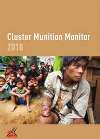ID :
279744
Wed, 04/03/2013 - 08:14
Auther :
Shortlink :
https://oananews.org//node/279744
The shortlink copeid
A Moral Obligation To Act, Remove Threat Of Cluster Munitions By Noeleen Heyzer and Minh H. Pham

It was both a hopeful and a sobering visit we had recently to the Cooperative Orthotic and Prosthetic Enterprise (COPE), an innovative local organization in Vientiane, Lao PDR, that provides rehabilitation services to survivors of Unexploded Ordnance (UXO).
We were struck by the centre’s multidimensional assistance to help people with UXO-related disabilities rebuild their lives – but we also directly encountered the enduring legacy of UXO across Lao PDR. It is a legacy that, during a similar visit last year, then-US Secretary of State Hillary Clinton pledged to help overcome by committing American support to clearance of UXO and assistance to victims in the country.
It has been 40 years since nearly 3 million tons of bombs – 1 ton for every man, woman and child – were “secretly” dropped on Lao PDR during the Vietnam War. This included more than 270 million cluster munitions, or “bombies,” which release hundreds of sub-munitions over an area of up to 1 square kilometer. Because they have no technical means to locate military targets, bombies have a wide and almost indiscriminate effect, with civilians comprising more than 80 percent of related injuries or deaths. But they also have a high dud rate: up to 30 percent of the bombies did not explode. Moreover, their exact locations are still not completely mapped out.
UXO may have been dropped on Lao PDR as part of a “secret war,” but the need for their clearance and for assistance to the victims should be an open issue, addressed by the world at large. Despite considerable national and international efforts, less than 2 percent of UXO have been cleared in the country. And while the number of casualties caused has dropped, from more than 300 annually just a few years ago to 56 in 2012, this is not necessarily attributable to clearance. Rather, it may be ascribed in large part to heightened UXO awareness – and, one might even say, to luck.
All this has special resonance today, observed annually as the International Day for Mine Awareness and Assistance in Mine Action. It remains indispensable that the global community stay resolved to meeting the goal of a world free of mines and, in particular, cluster munitions. Explosive remnants of war are not simply a legacy, but constitute a serious humanitarian threat to the safety, health and lives of the civilian population of Lao PDR.
Equally important, they impede social and economic progress at both national and local levels, thus standing as a living challenge to national development. Often, the provinces and districts displaying the highest levels of UXO contamination are the poorest areas of the country. Among other things, the prevalence of bombies and other UXO inhibits rural development and could contribute to preventing Lao PDR from realizing its aspiration to graduate from the list of Least Developed Countries (LDCs) by 2020. They severely restrict access to valuable land that could be used for agriculture and other development purposes. Moreover, there is a powerful economic argument that can buttress the development imperative: UXO contamination also is an obstacle to private investment, especially in the context of Lao PDR’s dependence upon its natural resource endowment. Simply put, it increases the costs of doing business.
In the Asia- Pacific Region, at least 15 states suffer varying degrees of contamination from landmines, cluster munitions and/or other Unexploded Ordnance (UXO). Five countries in the region - Afghanistan, Cambodia, Lao PDR, Sri Lanka and Vietnam - are among the most severely affected in the world.
In 2010, five of 8 states with more than 100 UXO casualties, were in the Asia-Pacific Region.
For its part, Lao PDR has particularly emerged as a leader on UXO policy issues, including moving forward on the Convention on Cluster Munitions (CCM), which has been signed by 111 countries. This international treaty bans the use, production, stockpiling and transfer of these weapons, sets strict deadlines for clearance of contaminated areas, and includes groundbreaking provisions for further assistance to victims and affected communities.
While the Convention represents an important start at policy level, the moral obligation remains to systematically and effectively address the unacceptable harm on the ground. Doing so can contribute to poverty reduction, while also increasing access to health care, education and other essential services; in turn, this will boost overall national development. It also will heighten progress toward achievement of Millennium Development Goal (MDG) 9 in Lao PDR, to reduce the impact of UXO in the country by 2020, and can serve as a “multiplier” for achievement of all other MDGs by ultimately underpinning improved livelihoods.
Within this framework, it will be advisable to integrate the issue of clearing UXO and mines as part of the global post-2015 agenda. We call upon the upcoming High-Level Panel meeting in New York in May to discuss this as part of its work toward a new consensus on development and citizen security.
In all, it is important that UXO be kept on the development agenda, in Lao PDR and around the world. Although much remains to be done, work in the sector is beginning to achieve significant development as well as humanitarian results.
Whether as a State or as an international development organization, we have a responsibility to protect the most vulnerable people and ensure that their access to a life of dignity and security is met. The presence of UXO diminishes those opportunities for millions of people in Lao PDR. Now, it is our moral obligation to ensure that UXO are gone once and for all.
***
Noeleen Heyzer is UN Under Secretary-General and Executive Secretary of the United Nations Economic and Social Commission for Asia and the Pacific. Minh H. Pham is the Resident Coordinator of the United Nations in Lao PDR and the Resident Representative of the United Nations Development Program./end





